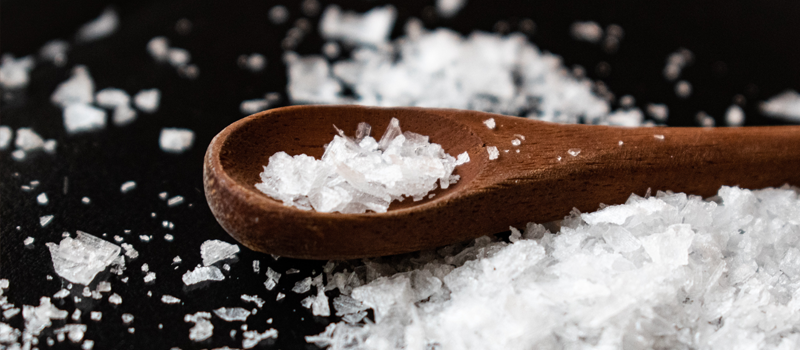Why India should cut down on its salt intake
Dr. Kavya Somesh MD (General Medicine) endorses this article. Kindly read on to know more about Pre-hypertension. To make an appointment to meet Dr. Kavya at Hande Hospital, kindly call 9841011390.
The seemingly innocuous act of consuming salt can have dangerous repercussions when taken in excess. Excessive sodium intake contributes to the rise of hypertension, heart disease and stroke. The dangers often lurk undetected, warranting urgent attention and a reevaluation of our dietary choices. An average Indian’s sodium consumption is more than double the physiological need and dramatically exceeds the World Health Organization’s (WHO) recommended daily intake of <5 g of salt for adults.
The WHO recently published the ‘Global Report on Sodium Intake Reduction’, which sheds light on the progress of its 194 member states towards reducing sodium intake by 30 % by 2025. Regrettably, progress has been lethargic, with only a few countries making considerable headway towards the objective. Consequently, there is a proposal to extend the deadline to 2030.
India has enacted voluntary measures to decrease sodium in food supply and promote healthier food choices. The WHO devised a sodium score, ranging from 1 (least implementation) to 4 (highest implementation) for each member state based on factors such as the extent of implementation of sodium reduction and other related measures. India’s score of 2 signifies the presence of at least one voluntary policy, emphasizing the need for more rigorous efforts to address this health concern.
Reducing sodium intake
But why is it essential for India to reduce its salt intake? First, empirical evidence highlights the strong correlation between reduced sodium intake and decreased blood pressure. As per a seminal paper in the BMJ, lowering sodium intake by 1 gram per day (2.5 grams of salt) leads to 5 mm Hg reduction in systolic blood pressure (BP) for individuals aged 55, causing an estimated 22% decrease in stroke incidence and a 16% increase in myocardial infarction incidence. This evidence suggests that salt reduction is a cost-effective and practical approach to preventing cardiovascular disease.
Second, elevated BP is a critical risk factor for cardiovascular disease, the foremost cause of mortality worldwide. In 2001, it contributed to approximately 54% of strokes an 47% of coronary heart diseases globally. This statistic has gone up since then.
Third, the staggering economic impact of cardiovascular disease on low and middle-income countries (LMICs) is estimated at $3.7 trillion between 2011 and 2025 due to premature mortality and disability. This figure represents an alarming 2 % of the GDP of LMICs. Notably, the World Economic Forum projects that the Indian economy alone faces losses surpassing $2 trillion between 2012 and 2030 as a consequence of cardiovascular disease. This highlights the urgent need for effective interventions to mitigate the economic and health consequences of cardiovascular disease in LMICs.
Cardiovascular disease and hypertension pose significant challenges in India, primarily due to four reasons. First, as per data from the Registrar General of India, WHO, and the Global Burden of disease study, cardiovascular diseases have emerged as the primary cause of mortality and morbidity. In the last 25 years, the age-adjusted cardiovascular disease mortality rate has risen by 31%. Hypertension has been identified as the leading risk factor for such diseases in India. Second, data from the National Family Health Survey- 5 reveals that hypertension is more prevalent among men aged 15 and above compared to women in the same age group. Hypertension is more common in southern states particularly Kerala, while Punjab and Uttarakhand in the North also report high incidence rates.
Third, the pre-hypertensive population, defined by systolic blood pressure levels of 120-139 mm Hg or diastolic blood pressure levels of 80-89 mm Hg warrants attention. At the national level, 38.5% of women and 49.2% of men are pre-hypertensive, with a higher prevalence in the Northern States. There is sufficient evidence to confirm that Indians with BP readings between 130 and 139/80-89 mm Hg face significant risks of cardiovascular disease, stroke and premature mortality. Many Indians classified as pre-hypertensive are now included in the newly defined stage – I hypertension by the American guidelines.
Fourth, the 2020 Report on Medical Certification of the cause of Death shows that circulatory system diseases account for 32.1% of all documented deaths, with hypertension being a major risk factor.
Government Initiatives
The Union Government has initiated several voluntary programs aimed at encouraging Indians to decrease their sodium consumption. The Food Safety and Standards of India (FSSAI) has implemented the ‘Eat right India’ movement, which strives to transform the nation’s food system to ensure secure, healthy and sustainable nutrition for all citizens. In line with this goal, the FSSAI launched a social media campaign called ‘Aaj Se Thoda Kam’. However, the average Indian’s sodium intake remains alarmingly high. Evidence shows an average daily consumption of approximately 11 grams.
India needs a comprehensive national strategy to curb salt consumption, as current measures have fallen short. A multipronged approach, engaging consumers, industry and the Government, is crucial. Collaboration between State and Union Government is essential to combat hypertension, often caused by excessive sodium intake.
Bibek Debroy Chairman, EAC-PM
Aditya Sinha Additional Private Secretary (Policy & Research) EAC-PM
